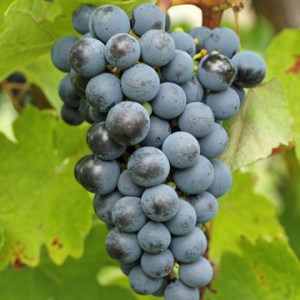Estate Grapes | Sagrantino

Type of Wine: Medium to full-bodied wine with moderate acidity and high tannins.
Origin: Sagrantino hails from the province of Umbria, which lies just east of Tuscany. The production area is extremely small and centered in the town of Montefalco with less than 250 acres planted to it (this compares to 50,000 planted globally to Chardonnay). Little is known about the origin of the grape since production of the wine has been focused almost exclusively to the nearby villages and local churches. Sagrantino is one of the most tannic red wines in the world, easily surpassing Petit Verdot and Tannat.
Color: Sagrantino makes wine that is inky purple with an almost black center owning in large part to its relatively thick skin.
Description: Sagrantino quite simply is a monstrous red wine with gripping tannins that, when bottled without any other grapes is virtually undrinkable. But when blended with Sangiovese and Montepulciano the resulting wines can reach unprecedented levels of excellence. The bouquet is one of dark brooding red fruits with hints of cinnamon and earth. Given its structure this grape is ideally positioned to make a “passito” style wine which is the Italian version of a reserve port.
Aging: Given the intense amount of tannins in the grapes, these wines need to rest for at least three years to soften, less if blended with other Italian reds.
Best Location: As in Tuscany, sunny and warm climates with cool nights are optimal for the grapes. Unlike Sangiovese, Sagrantino can endure more challenging winter weather.
Planting: The grapes were planted with northern and eastern exposures. These aspects provide the benefit of a cool down period from the intense summer heat. These cooler temperatures allow for the “grapes to rest” and not deplete the vines of their acids and flavor compounds through avoiding over-respiration.
Food Pairings: Sagrantino is a wine for red meat and when made in the passito style, it is a classic end of meal beverage that Italians called Vino di Meditazione (a wine that allows you to mediate on life).